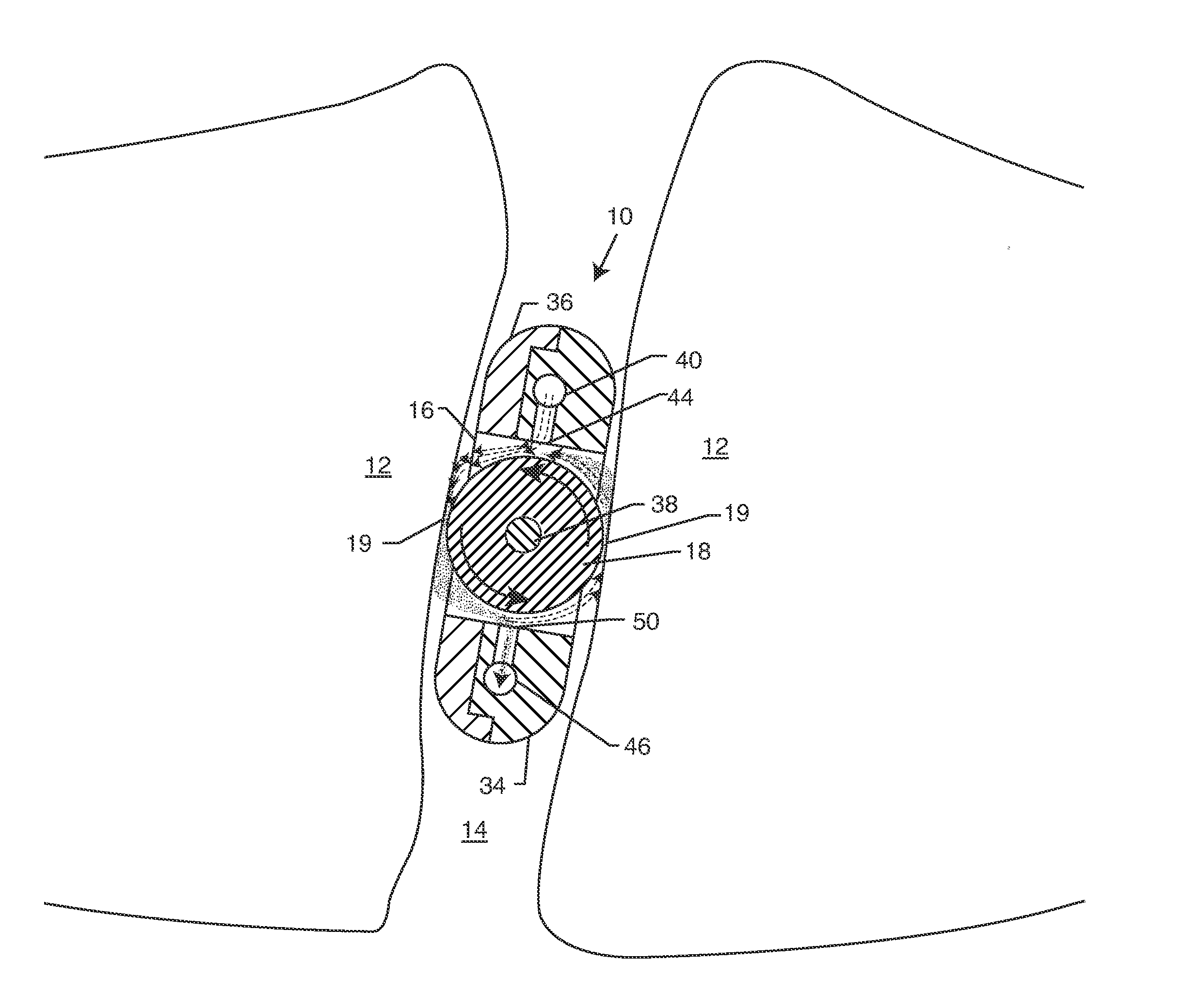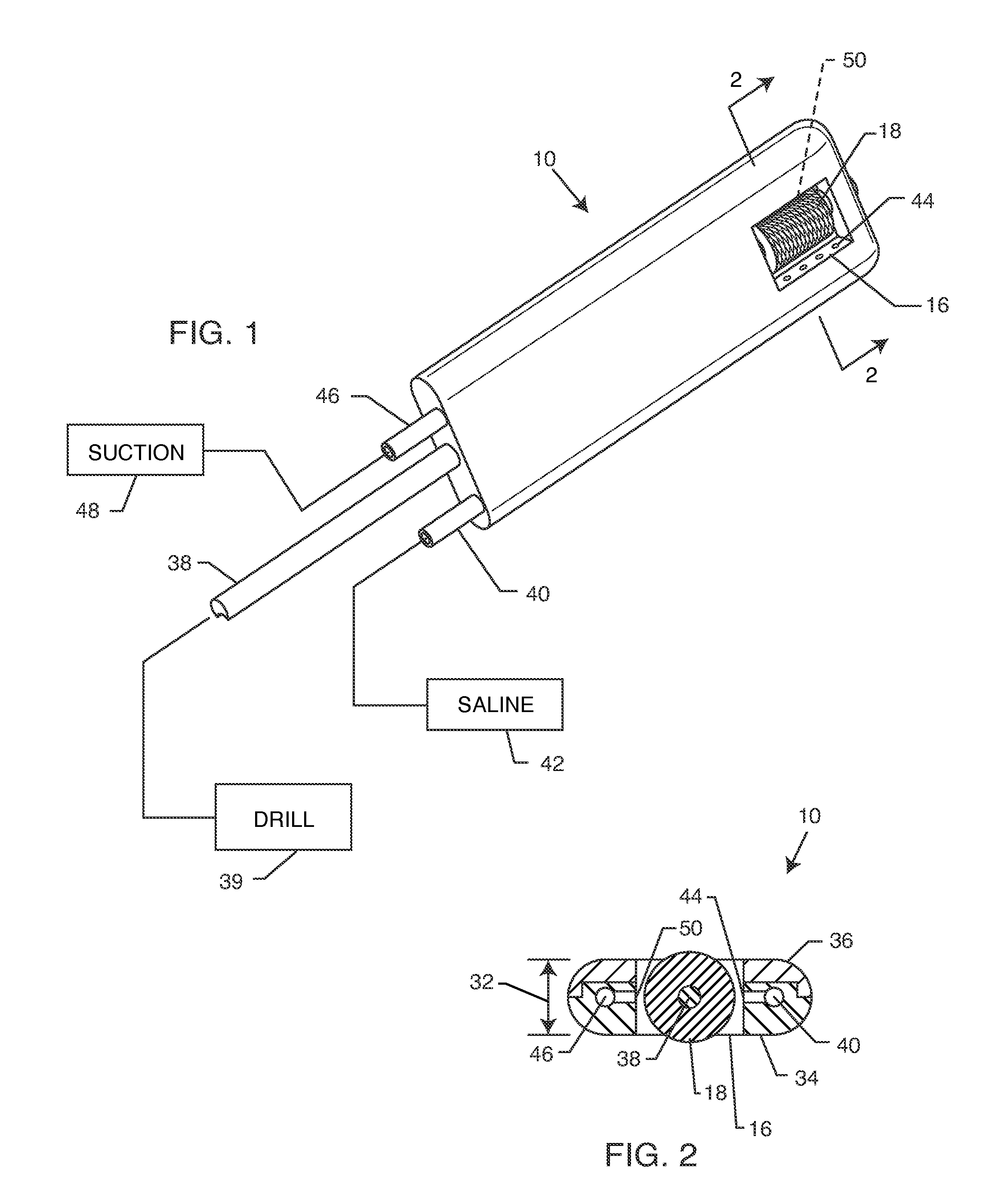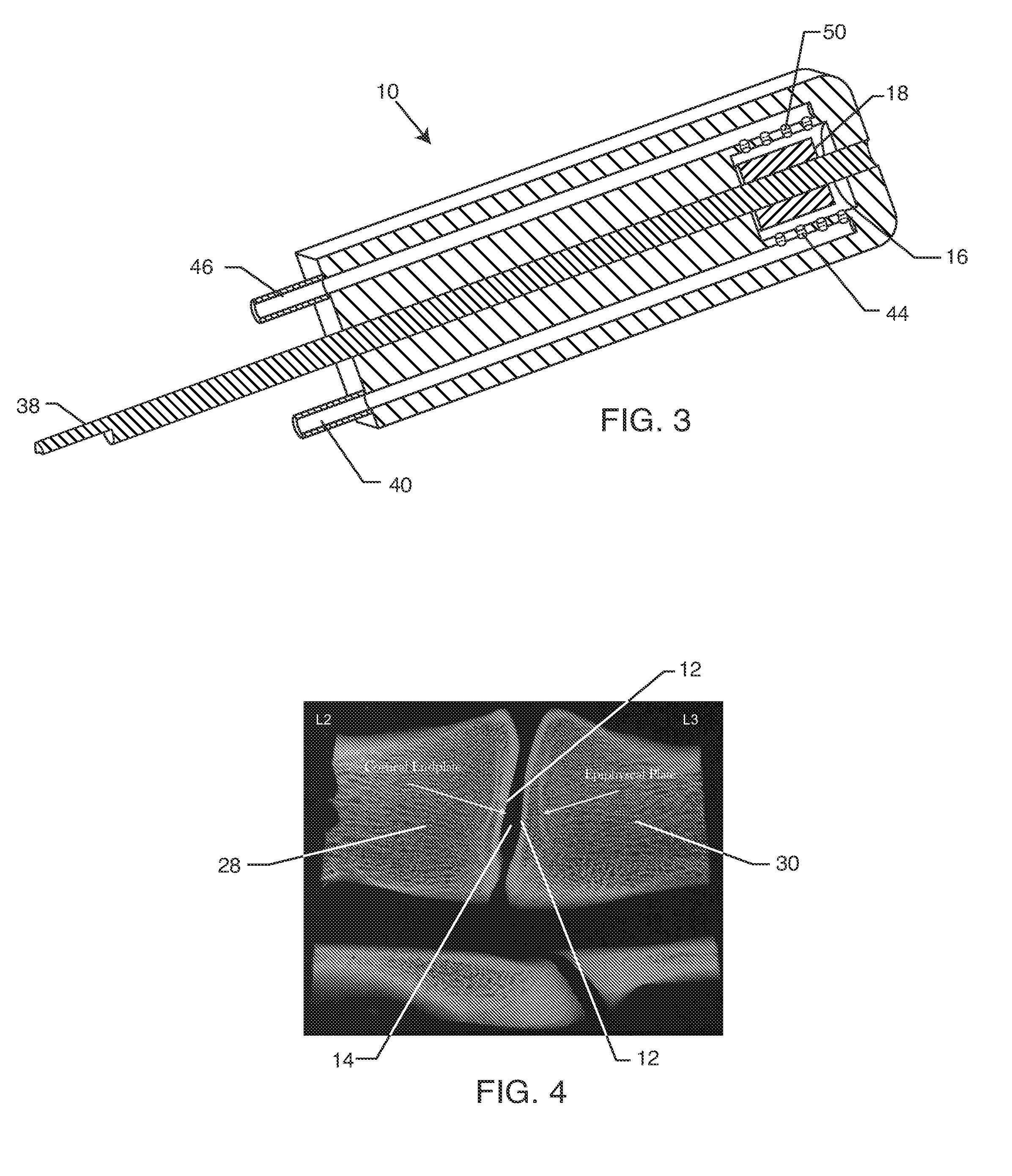Intervertebral milling instrument
a milling instrument and intervertebral technology, applied in the field of improved surgical instruments, can solve the problems of loosening of the spacer element, significant increase in the risk of inadequate spacer element attachment, and unfavorable osseointegration attachment of the cfc layer to the spacer
- Summary
- Abstract
- Description
- Claims
- Application Information
AI Technical Summary
Benefits of technology
Problems solved by technology
Method used
Image
Examples
Embodiment Construction
[0025]As shown in the exemplary drawings, a milling instrument referred to generally by the reference numeral 10 is provided for grinding or shaving in a closely controlled manner a thin layer from the cortical bone endplates 12 (FIG. 10) lining an intervertebral space 14 in the course of spinal fusion surgery or the like. The milling instrument 10 comprises a guide housing 16 having a thickness dimension selected to fit with close tolerance into the intervertebral space, in combination with a grinding or milling wheel 18 exposed and protruding a short distance beyond the opposed side faces of the guide housing 16 for engaging and contacting the adjacent cortical endplates 12 lining the intervertebral space 14. The grinding wheel 18 thereby removes a thin layer such as a thin layer of calcified fibrous cartilage 19 (CFC) from the cortical endplates 12 in a controlled manner, for achieving improved fusion ingrowth fixation with a spacer element 20 (FIG. 9) implanted subsequently into...
PUM
 Login to View More
Login to View More Abstract
Description
Claims
Application Information
 Login to View More
Login to View More - R&D
- Intellectual Property
- Life Sciences
- Materials
- Tech Scout
- Unparalleled Data Quality
- Higher Quality Content
- 60% Fewer Hallucinations
Browse by: Latest US Patents, China's latest patents, Technical Efficacy Thesaurus, Application Domain, Technology Topic, Popular Technical Reports.
© 2025 PatSnap. All rights reserved.Legal|Privacy policy|Modern Slavery Act Transparency Statement|Sitemap|About US| Contact US: help@patsnap.com



